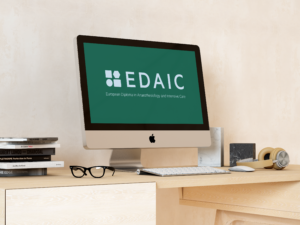Newsletter 2022
Newsletter April 2022: The clinical corner: Multimodal analgesia The need of the hour
Jyoti Gupta, MD
jyoti.yogesh.gupta@gmail.com
INTRODUCTION
As per the IASP definition, pain is an unpleasant sensory and emotional experience associated with or resembling that associated with actual or potential tissue damage.1 Modern-day anaesthesia, with its focus on fast-track techniques and enhanced recovery after surgery (ERAS), demands equally good perioperative analgesia with minimum possible side effects. There has been a shift towards opioid-sparing analgesia in the past decade. This along with recent advances in the field of analgesia has led to the propagation of the administration of multiple pharmacological and non-pharmacological agents for pain management.
CONCEPT OF MULTIMODAL ANALGESIA
The pathophysiology of pain is not new to physicians. The modern-day knowledge and improvisation of older techniques is the result of continuing research and understanding of the interactions at various levels of pain transmission and propagation. Multiple receptors are present throughout the pain pathway. At one point, there could be mu-receptors, NMDA receptors, and alpha-2 receptors either individually existing or in a combination. Blockade of a single receptor cannot provide a fool-proof analgesic effect. However, targeting multiple receptors not only provides a better quality of analgesia but also lowers the side-effect profile of individual analgesic agents. Multi-modal analgesia involves the use of additive or synergistic combinations of analgesics to achieve clinically required analgesia while minimizing significant side effects associated with a higher dose of a single equianalgesic medication such as an opioid analgesic.2
RANGE OF PHARMACOLOGICAL AGENTS
Various pharmacological agents with differing mechanisms of action target pain pathways. Some of these agents include alpha-2 agonists, NMDA receptor antagonists, dexamethasone, NSAIDs, gabapentinoids and acetaminophen. Alpha-2 agonists have been shown to have opioid-sparing effects but have their own side effect profile.3 Hypotension and bradycardia should be considered seriously while administering these agents. Ketamine has been proven to be a wonderful analgesic agent, but tachycardia and hypertension are the limiting factors for its use. Dexamethasone when administered prior to initial insult in an appropriate dosage acts not only as a wonderful pre-emptive analgesic but also anti-emetic. Paracetamol 4 is widely used in the perioperative period as a safe analgesic agent. NSAIDs like ketorolac and diclofenac are commonly used but patients with an abnormal renal profile and asthma are limiting factors for their use. The addition of magnesium sulphate 5, lidocaine and tramadol to the analgesic regime offers superior analgesia. Regional anaesthesia techniques offer a safe alternative across a range of patient populations ranging from minimal to high-risk cases. Administration of multi-modal analgesia along with regional anaesthesia not only improves the quality of analgesia but also decreases the breakthrough pain and opioid requirement.
BENEFITS OF MULTIMODAL ANALGESIA
The use of a combination of pharmacological and non-pharmacological agents for perioperative analgesia not only provides a better quality of analgesia but also decreases the requirement for opioids and related side effects. The degree of patient satisfaction obtained through early mobilisation and hence earlier hospital discharge is attributed to a great deal to improved analgesia among other factors. Utilising the understanding of the mechanism of action of multiple analgesics and a judicious combination of multiple agents can not only provide a better quality of analgesia but decrease the side effects as well. Multimodal analgesia covering multiple facets of the pathophysiology of pain is, therefore, the need of the hour.
Conflicts of interest: None
Source of funding: None
References
- https://www.iasp-pain.org/publications/iasp-news/iasp-announces-revised-definition-of-pain/
- Bhatia A, Buvanendran A. Journal of Spine Surgery 2019;5( Suppl 2):S160-S165
- Erik M Helander, et al. Curr Pain Headache Rep. 2017 Jan; 21(1):3
- Graham GG, Scott KF. Am J Ther 2005;12:46–55
- Koinig H, Wallner T, Marhofer P, et al. Anesth Analg 1998;87:206–10
[maxbutton id=”1″ url=”https://www.esaic.org/newsletter/” text=”Read the Newsletter” ]











